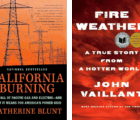The pandemic has penetrated every corner of our lives, and actuarial science is no exception.
The incredible disruption when the unemployment rate zoomed past 15%, then plunged; the lockdowns that took millions of vehicles off the roads; the movement of millions of workers to at-home online work — all changed the way we live. Property-casualty insurance was similarly affected — employers who laid off workers reduced their workers’ compensation exposures; those who worked from home altered their likelihood of injury; and the cars that stayed in the garage reduced the likelihood of being in accidents.
The impact redounded through the industry last year. Actuaries, though, predict the future by studying the recent present. At the 2021 Virtual Ratemaking, Product and Modeling Seminar, actuaries got a look at what happened in auto lines and workers’ compensation as well as some insights into how to incorporate that knowledge into future pricing decisions.
In one session, “COVID-19 in Workers Compensation — The View Forward,” CAS Fellows David Bellusci, executive vice president, chief operating officer and chief actuary of the Workers’ Compensation Rating Bureau of California; Rick Poulin, vice president of workers’ compensation product at Travelers; and Neal Leibowitz, actuarial manager at Liberty Mutual Insurance, related a series of facts that were surprising in their impact, or, sometimes, in their lack of impact.
The work-at-home phenomenon means that jobs that were once in one state can now be filled throughout the country, causing a dispersion of exposures.
In the other, “COVID-19 Impact on Auto Ratemaking,” John Fong, FCAS, senior actuarial manager at Lyft, documented changes in driving patterns caused by the spring lockdown and afterwards. Ralph Dweck, FCAS, senior manager at ISO/Verisk, showed how his organization adapted an existing predictive model to run scenario tests that projected changes in loss costs for auto products.
Among the workers’ compensation insights:
- In the early stages, some states’ workers’ compensation programs were hit much harder than others. In second quarter 2020, more than half of all claims in New Jersey and Massachusetts were COVID-19 claims, versus less than 10% in South Carolina, Kansas and Texas.
- In California, more than 110,000 COVID-19 claims were reported through January 25, 2021, 20% of all indemnity claims. Twenty-eight percent were initially denied, mainly because the claimant had not shown a positive test for the disease. (That, incidentally, is a higher denial rate than the norm in workers’ comp, Bellusci said.)
- California data also showed that there were more mild claims (average cost: $3,000) than expected, 90% versus 82%. The changing mix of claims drove down the estimated cost of the average claim to $25,000 from earlier estimates of $30,000. That was lower than the typical indemnity claim, Bellusci said.
- States with a presumption standard didn’t have appreciably more COVID claims than states lacking such a standard. (States with a presumption standard assume that certain ill workers, typically first responders, got COVID at work. Usually, an ill person must prove their illness resulted from their work to receive a comp benefit.)
- The jobs lost from the COVID recession were quite different from prior downturns. For example, in California, construction jobs fell more than 35% in the 2008 Great Recession, but last year they fell less than 10%. But leisure and hospitality jobs fell nearly 30% in the COVID recession, versus less than 5% in the Great Recession.
Job losses were also concentrated in low-wage industries this time. Jobs in the lowest pay quartile fell by 8 million, Bellusci said, while the number of jobs in the highest quartile rose by 1 million.
The nature of the workforce will also change, Leibowitz said. A lot of jobs lost won’t return. They will be replaced by new positions, like grocery shopper. That affects workers’ comp because people are more likely to be injured in their first year of work. Also, the work-at-home phenomenon means that jobs that were once in one state can now be filled throughout the country, causing a dispersion of exposures.
One area without much data is the impact of long-haul COVID sufferers. There haven’t been many credible studies of the phenomenon, Poulin said.
“Long-haulers is the most talked about [area],” he said, “but also the thing that people know the least about so far. It is a very big headache that keeps me up at night.”
To examine the impact of the pandemic on auto issues, Fong considered three different areas: auto usage, driving behavior and auto insurance.
He cited data from Google’s COVID-19 Community Mobility Reports to show stark differences in driving patterns. Driving to transit stations and workplaces were both down more than 15% from a baseline taken early in 2020, before the pandemic. These reflected the nationwide shift to remote working.
Overall vehicle miles driven also declined sharply during the spring lockdown. It largely recovered later in the year but dipped again in December, with the second wave of the virus.
At the same time, Fong said, drivers remaining on the road were taking greater chances. He cited:
- An increase in fatality rates per vehicle miles traveled, as measured by the National Highway Traffic Safety Administration.
- Telematics data from Zendrive showing sharp increases in both rapid acceleration and phone distractions.
“There’s less traffic on the road, and people are thinking they can navigate the road at a higher speed and are checking on their phones more,” Fong said.
At the same time, there is greater interest in usage-based insurance, he said, perhaps because people realized that they could have saved substantially had their insurers been monitoring the decrease in miles driven.
Fong also said claims handling may have changed during the pandemic. With fewer claims to handle, claims estimates were likely posted faster than in the past, a fact that actuaries would need to account for in estimating ultimate claims costs. The rise of remote work also encouraged handling claims digitally, through increased use of photographs and apps.
Meanwhile, Dweck discussed a predictive model analysis that projected declines in commercial auto insurance loss costs from the pandemic.
A team tracking the pandemic at ISO homed in on the organization’s Risk Analyzer Environmental models, which predict loss costs at a zip code level using noninsurance variables in areas such as traffic composition, weather and terrain, experience and trend, traffic generators (which capture information on types of businesses in an area, for example malls and train stations), and traffic density and driving patterns.
The last two of these seemed to be most affected by the pandemic, Dweck said. ISO developed a traffic score, which the existing models relate to the log of loss cost estimates for a given census block.
Next, they looked for economic indicators that predict how that traffic score changes. The score itself, it turns out, is sensitive to the log of the number of operating locations in the region. During a recession or lockdown, the number of operating locations in an area would presumably fall.
The team fit the relationship between the traffic score and operating locations, which gave them an estimate of the impact that a change in operating locations may have on loss costs (via the initial relationship between traffic score and loss costs).
For one type of commercial auto — trucks, tractors and trailers — decreases in operating locations reduced loss costs for both bodily injury and property damage coverages by a few percentage points. Perhaps surprisingly, collision coverage saw little change, which Dweck suggested may be related to the fact that many accidents that cause property damage (think of a big truck nudging an auto) are less likely to cause a first-party collision claim. Meanwhile, comprehensive coverage loss costs actually rose slightly according to the model, which Dweck suggested could be caused by increases in theft and vandalism of vehicles.
They also tested the model for private passenger type vehicles — an important exposure in commercial auto — and found similar results, except for a decrease in collision loss costs. Dweck said this result is more expected for private passenger types since a car striking a car would likely generate both a property damage claim and a collision claim. Finally, the exercise performed on the personal auto models yielded similar results to the results from commercial auto private passenger types.
Some of the analysis, Dweck said, entered ISO’s regular loss cost reviews, which they perform annually for every state.
James P. Lynch, FCAS, is chief actuary and vice president of research and education for the Insurance Information Institute.











